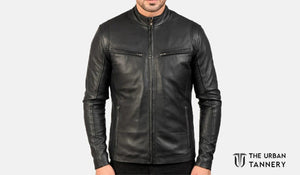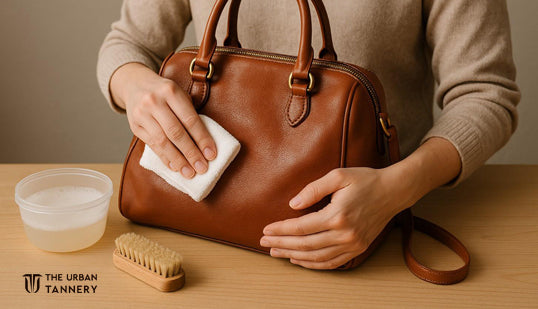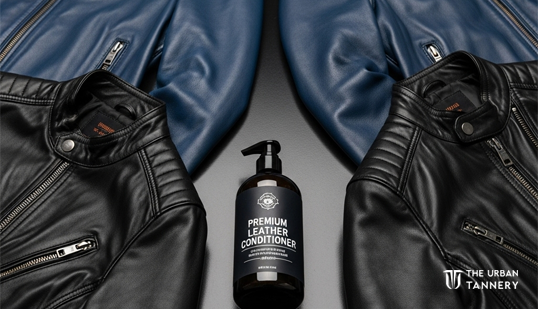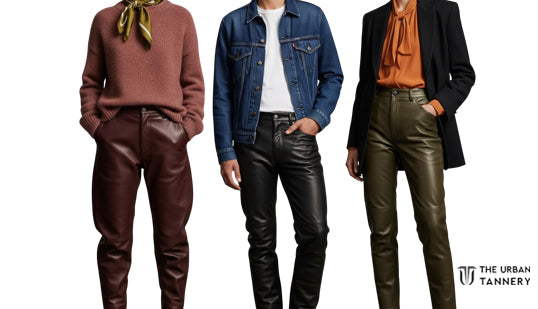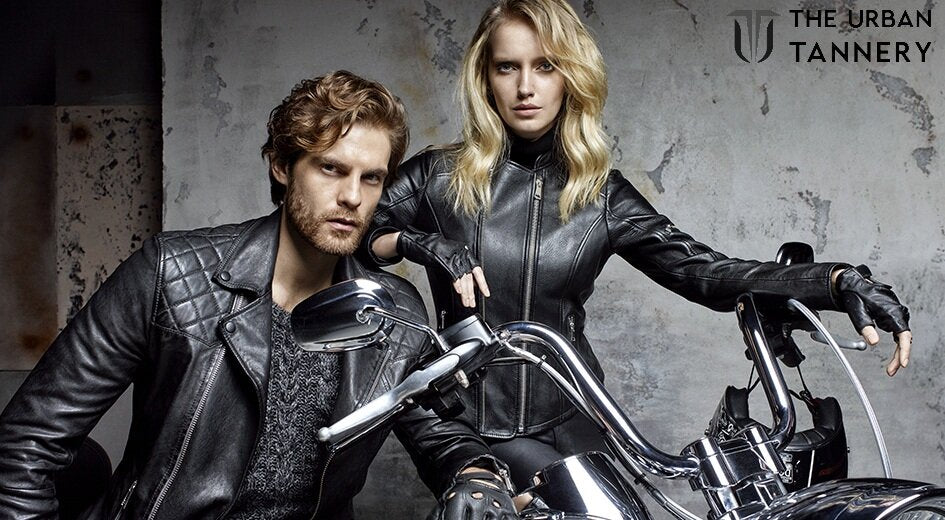Leather is the oldest natural material on Earth, as mankind believed it to be the first fabric crafted with human hands. People used animal-based leather goods for thousands of years for protection and to keep their bodies warm.
However, a thought pops up in our minds: Is it still relevant today? Absolutely, yes! Let’s understand all the meticulous details about leather.
Leather is considered an organic and natural material on this planet, produced from tanned hide and transformed by tanneries into rot-resistant fabric to create end-products.
Additionally, leather has evolved meaningfully over the epochs. Leather outfits and clothing are famous all over the globe for their timeless appeal.
Despite this, leather boasts water-resistance, durability, and insulating qualities that make it desirable for various industries, including accessories, apparel, and furniture.
Thus, it is a diversified animal-based fabric that is available in various grades, colors, and styles.
History of Leather

In the early days, humans used animals for survival and to seek meat for nutrition; they utilized every part of the animal. Human beings clothed themselves with animal skins for at least 400,000 years when they dried the skin in the sun, softened it with animal fat, and salted and smoked them for preservation.
Use animal hide or skin for clothing, and their horns and claws become tools and weapons. At that time, people had no idea of sustainability as much as we do now, and they used it to fulfill their needs.
Eventually, early humans figured out how to use the skin and hair, too. They discover the basics of training through their experiments.
Over time, they learned refined methods to dry, salt, and tan hides and change them into soft fabric. A reliable and lasting material that becomes a necessity for daily life.
Manufacturing Process of Leather
Before discussing the role of men’s and women’s leather jackets in the fashion industry, let’s look at the leather-making process.
Preservation of Animal Hide or Skin
Fresh animal hides are cured to prevent microbial growth. During the curing, experts remove any water from tissues to slow down the process of decomposition. If any microorganisms remain on the skin, they develop putrefaction.
For these reasons, experts use coarse-grained rock salt with 2 to 3 mm particles and antiseptic agents. They are placed in layers so the brine can drain out properly.
Moreover, they are stored in a room where 70% to 90% humidity exists in the air, and the temperature must be around 10°C. They examined the hide and sorted it according to the factors, including the thickness, presence of scars, and weight, after two weeks.
Tanning Preparation
Once the animal skin arrived at the tannery, it passed through a series of operations before the tanning step.
-
Firstly, experts soak the skin to cleanse and rehydrate to eliminate the grime and impurities.
-
Secondly, they go for the unhairing and liming, where they chemically remove animal hairs from the hide.
-
Thirdly, fleshing is a process where machines carefully strip away the underlying tissue of the skin and make it cleaner.
-
Fourthly, bating, where the experts use enzymes to soften the leather.
-
Lastly, pickling is the process where skillful professionals acidify it to prepare it for the uncomping tanning process.
Tanning
Tanning is an operation that transforms raw animal hides into long-lasting and durable leather. In this process, experts use a substance called tannins, which come from plants, and minerals like chromium salts or a mix of both.
Furthermore, these tannins not only assist in hide preservation but also stop it from rotting.
Nevertheless, tanning confirms that leather is resistant to heat and moisture, and gives it flexibility and strength. With the tanning process, this material becomes long-lasting, tough, and ready to be used for various applications, including furniture and fashion.
Post Tanning
After completing the tanning stage, the animal skin is meticulously dried and dyed for further manufacturing stages. Leather manufacturers apply oils and greases to the hide's surface to soften the leather and increase its water resistance.
Finishing
Apart from that, leather manufacturers dry the leather to about 15% moisture, then slightly rehydrate it to around 20% to improve flexibility. After a final stretching and coating, the leather is ready to be manufactured for the end products. Here are some finishing steps that apply to the leather surface to ready for product manufacturing.
-
Aniline finish enhances the natural surface and beauty of leather by coating it with a transparent substance.
-
A semi-aniline finish covers leather with relatively opaque layers of pigment and translucent material, masking minor defects.
-
Pigment finish covers the leather with opaque pigments only and provides easy care properties. Additionally, this pigment finish offers reliable resistance to moisture and humidity.
Types of Leather Based on Grading
Let’s dive into the best types of leather based on grading.

Full-Grain leather
Full-grain leather is the most sturdy and long-lasting option, indicating high quality. This robust and durable leather is made from the top layers of hide without any buffing or sanding process. Durable full-grain leather retains the imperfections and natural marks that ensure its authenticity. Free from chemical treatments and a perfect option for furniture, saddles, and premium footwear. Full-grain leather has the ability to develop a rich patina over time, becoming even more beautiful.
Top-Grain Leather
Top-grain leather is produced from the second-highest layer of animal hide. It is a thinner and more pliable form of leather compared to other quality types. Apart from that, top-grain leather is buffed, sanded, or split to get a smooth and even surface. It has natural markings along with providing a smooth surface. Wallet and handbag manufacturers use top-grain leather for its insane quality.
Genuine Leather
Genuine leather is manufactured from different layers of animal hide through heavy processing to achieve a specific look. Therefore, this leather earned the name “corrected leather”. This leather doesn’t have naturally smooth and uniform patterns like top-grain and full-grain leathers.
Manufacturers press apterin into the surface, sand down imperfections, and apply colors to make it attractive. Thus, products made from genuine leather are more prone to scratches, tears, and wear. Although it appears refined at first glance, it lacks the strength and natural quality of the real leathers.
Bonded Leather
Bonded leather is produced from the remnants and leftover scraps of leather. Further, it is mixed with adhesives and heavily coated in plastic, and barely manages to resist any scratches and harshness. Bound leather is weak and prone to cracking, though it is an affordable option for goods manufacturing.
Types of Leather Based on Sources
Let’s look at the best types of leather based on their sources.
Cowhide Leather
As the name suggests, cowhide leather comes from cow hide and is known for its insane durability. In contrast, this leather is not softer or flexible than others, but it is the preeminent option for rugged jackets and cowboy boots.
Sheepskin Leather
Sheepskin leather is soft and offers a supple feel when someone touches it. It comes from the sheep’s hide and is famous for its flexibility.
Moreover, it gives a semi-aniline finish, which makes more porous options for leather jackets and gloves.
Goatskin Leather
Goat skin leather, extracted from the hide of goats, has become popular for its durability. It provides the perfect balance of durability and elegance, making it ideal for goods that require high-quality options.
Besides, it is known for its natural resistance to abrasions and remarkable sturdiness. Over time, the beauty of this leather increases day by day. It’s flexible and lightweight, which is why it has become the top choice for stylish leather jackets and handbags.
Suede Leather
Suede leather is made from the underside of the animal’s hide and has a velvety nap that feels luxurious. It offers a relaxed and matte finish that makes it perfect for shoes, accessories, and jackets.
This leather is made from animals, including cowhide, sheep, goat, and deer. Suede isn’t as resilient and durable as full-grain leather; rather, it is lightweight and pliable.
Nubuck leather
Nubuck leather is a top-grain leather that has been buffed on the grain side to achieve a matte finish and a velvety texture. This leather becomes a top priority for businesses due to its soft and luxurious feel.
Although this leather is ideal for making jackets that give a sophisticated look, it can darken over time with exposure to moisture and oils. Also, it has more strength from suede leather but requires gentle care.
Exotic Leather
Exotic leather is rare and quite expensive because it is extracted from non-traditional animals. It is extracted from crocodiles, snakes, lizards, sharks, and ostriches. Each animal hide has their own texture and unique qualities, which make this leather expensive.
As this leather involves rare animals, its use is controversial. High-end brands use this leather to manufacture luxury and premium products.
Role of Leather in the Fashion Industry
In the fashion industry, leather is famous for its insane durability and timeless look. People are crazy to wear leather outfits to achieve the rugged, classic, and sophisticated look. From vintage men’s leather jackets to sleek distressed and biker jackets, it ensures the edge and elegance.

Over time, leather develops a unique patina, adding depth and character to the wearer. Apart from this, designers have the ability to blend refined luxury with rugged appeal. Therefore, they craft everything from classic wardrobe staples to bold statement pieces.
Leather Clothing for Men

A well-fitted mens leather jacket instantly transforms the casual look and adds edge. However, the mens leather pants make a bold statement and a dapper look for a guy or a man. Whether a man needs leather clothes for a meeting or heading out at night, they have incredibly improved their personality.

Despite this, a sleek mens leather shirt works great over a basic tee or under a winter coat for a layered touch. Making leather-made jackets, shirts, and pants staples in modern clothing trends. Durable and rugged-looking outfits reflect confidence and personality and are effortlessly cool.
Leather Clothing for Women

Leather attire and clothes have been passed from the revolutionary era, from biker chic to a modern fashion trend. A sharp-shouldered womens leather jacket thrown over a ribbed knit dress is ideal for transitional seasons.
However, the addition of women leather pants in deep burgundy or camel, styled with a cropped sweater, is perfect for a luxe urban edgy vibe.
Modern cuts, hugging curves, and soft-touch textures make it both wearable and statement-worthy. So, add to your cart the best leather attire for men and women from the stunning collection “The Urban Tannery” today!
Caring Tips for Leather

Real and genuine leather bags, outfits, and accessories need proper care to increase their lifespan. Therefore, here are some caring tips you must follow to keep your leather clothes and bags safe.
-
Always use a mild cleaner and a soft fiber cloth to clean the leather.
-
Must invest in high-quality leather conditioners to revitalize the leather, restoring its moisture, shine, and flexibility.
-
Never use abrasive agents and harsh chemical products on the leather.
-
Don’t fold the leather jackets and shits; instead, hang them on padded hangers to main their shape.
-
Prevent permanent damage by spot-cleaning spills immediately.
-
Avoid prolonged sunlight exposure, as it can fade and dry the cloth.
-
Never wear jackets with overstuffed pockets, as they can lead to stretching and damage the original shape.
-
Avoid wearing the same leather attire daily and wear it on alternate days to allow recovery.
-
To remove deep stains or for a thorough cleaning, seek the assistance of a leather specialist.
Why Leather Remains the Style Icon?
The above discussion shows leather isn’t about the materials; it’s a story of heritage, innovations, and craftsmanship.
Whether it’s a rugged men’s leather jacket or a bold woman’s leather pants, this continues to innovate itself while staying true to its roots.
Every patina and distressed pattern of leather attire may reflect the journey of the wearer and their thoughts. The women's fashion industry’s leathers stand for a timeless and iconic look.
Therefore, leather will remain the ultimate style statement for a long time to come. “The Urban Tannery” boasts the finest collection of high-quality leather clothing and outfits.
FAQ:
Q. How Do You Restore A Worn Leather Jacket?
A. To restore the damaged men’s leather jacket and pants, you need to know about the type of leather. Begin by cleaning it with a mild cleaner and a soft, damp fabric. Afterward, you must apply a leather conditioner to restore the shine, flexibility, and moisture.
Q. What Is the Best Treatment For A Leather Jacket?
A. The preeminent treatment for your leather jacket is to purchase a mild and gentle leather cleaner. Avoid using harsh soaps and cleaning agents that strip the natural oil of lather outfits and clothing.
Q. Can Real Leather Be Restored?
A. Yes! Real leather can be restored and revitalized through proper cleaning and conditioning procedures. Even heavily worn leather can be repaired and improved by following proper solutions.
Q. What Should You Not Use On Leather?
A. Avoid using abrasive cleaners, harsh chemicals, alcohol, and silicone-based products on the leather surface. Instead, always go for mild and alcohol-free products for leather care.
Q. Is Leather Restoration Worth It?
A. Yes! The restoration of old and damaged leather can be worth it, particularly if you have high-quality leather. The restoration extends the lifespan of leather and saves money on product replacement.


